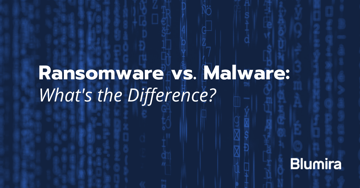With so many security tools out there, it’s difficult to determine the differences between certain types of products. One question you be asking yourself: Is firewall and antivirus the same thing?
Antivirus and firewall are sometimes used interchangeably, but each tool works differently to secure an environment. It’s especially important to know those differences when making a purchasing decision.
We’ll go over how each product works, and then discuss differences between the two.
What Is Antivirus Software And How Does It Work?
Over the years, antivirus (AV) software has evolved to also protect against malware. It continuously scans and analyzes data against a library of known malware types. Antivirus generally uses three different detection techniques:
- Specific detection (scanning). The most common detection method that antivirus software relies on is specific detection or scanning. A scanner compares data against a list of unique signatures or characteristics that viruses typically have. However this detection method has a major limitation: it can’t detect new malware types that don’t yet have a signature.
- Generic detection. Generic detection addresses the drawbacks of specific detection by searching for common features of popular malware families. Generic detections can be broad — like scanning for known exploit code — or specific; for example, scanning for specific packers that one malware strain uses.
- Heuristic detection. This is a more advanced method that uses suspicious behavior or file structures to detect viruses. Antivirus software developers create a set of policies to distinguish viruses from normal behavior, and then test code segments against these rules to determine whether they are a virus.
What Is a Firewall And How Does It Work?
A firewall allows or denies incoming and outgoing traffic from reaching its destination depending on configured rules. Since firewalls are often the first line of a network’s defense, they are considered a form of perimeter security. Firewalls act as a filtration system, blocking malicious traffic such as viruses, malware.
Firewalls use at least one of the following techniques to monitor network traffic:
- Static or packet filtering. This is the most popular type of firewall. Small amounts of data, or packets, that attempt to enter the network are analyzed against a series of filters. Then, the firewall determines whether they are allowed to enter or not depending on the source and destination of IP addresses, protocols and ports.
- Proxy service or application/gateway firewall. This method filters traffic at the application level. Proxy servers function as intermediaries, preventing direct connections between the device and incoming packets.
- Stateful inspection. This is a newer method that compares features of the packet against a database, monitoring it for specific defining characteristics. If the packet is a reasonable match, it is allowed through.
Differences Between Firewall and Antivirus
There are a few differences between firewalls and antivirus. One of the major differences is that firewalls can be hardware or software, while antivirus is always a software product. Also, the two detect malicious behavior differently; antivirus scans data and determines whether it is a virus, while a firewall filters data depending on policies.
We’ve highlighted the major differences between firewalls and antivirus products in the chart below:
|
|
Antivirus |
Firewall |
|
Implementation |
Software only |
Hardware and software |
|
Main objectives |
Scans malicious files and software and analyzes it against characteristics |
Denies/allows traffic to flow through depending on configured rules; packet filtering |
|
Targeted threats |
External and internal threats |
Only external threats |
|
Limitations |
Cannot detect fileless malware; new viruses |
Cannot block internal threats |
|
Counterattacks |
Evasion techniques such as DLL injection; obfuscation |
IP spoofing; routing attacks |
However, the differences between antivirus and firewalls are blurring as vendors develop new products such as next-generation firewalls (NGFW) and next-generation antivirus (NGAV). These two categories of products address the limitations of their more traditional predecessors.
Next-generation firewalls (NGFW). These advanced firewalls combine traditional network firewall technology with web application firewalls (WAFs) to protect against both web-based and network attacks. A NGFW also incorporates other capabilities, such as intrusion prevention systems (IPS), antivirus and encrypted traffic inspection. One defining feature of a NGFW is deep packet inspection, which inspects the data within the payload of the packet rather than just the packet header.
Next-generation antivirus (NGAV). Next-generation antivirus takes a cloud-based approach for easier deployment, and uses AI and machine learning rather than signature-based detection to detect malware that traditional antivirus wouldn’t catch, like fileless malware and new malware families without signatures. NGAV is sometimes used interchangeably with endpoint protection, although the latter usually refers to a more comprehensive feature set.
Choosing Between Firewall and Antivirus
Firewalls and antivirus both have their limitations, so choosing one tool over the other would result in gaps across your security coverage. Antivirus and firewall tools work together to secure an environment; if a virus bypasses the firewall by entering the environment through a download, for example, antivirus software can scan and block that virus.
Strong security programs take a layered approach, protecting your environment at each level — from the system to the network to the application level and beyond.
Both antivirus and firewall products are important for any security stack, but there’s no single product that will fully secure an environment against cyberattacks, especially against ransomware. The best way for organizations to protect themselves is with a layered, nuanced approach to security. Investing in a next-generation firewall (NGFW), a robust antivirus product, and endpoint detection and response (EDR) are important steps.
Not all antivirus and EDR solutions are created equal, either, so it’s important to test these products before you purchase to ensure that they detect attacker behaviors like process activity, network connections and registry content.
But those tools are less effective without a way to receive alerts and have visibility into an environment, which is why it’s crucial to have a centralized logging solution like Blumira.
Try Blumira For Free
Blumira detects suspicious behaviors that can lead to cyberattacks without overwhelming IT teams with alerts. Our platform also provides automated workflows and playbooks to give you guidance on remediation steps. Our team of security experts act as an extension of your team, ready to answer any questions about a finding or how to move forward.
Try Blumira for free today; deployment takes a matter of hours, and it’s easy to start getting immediate security value in your organization.
Erica Mixon
Erica is an award-winning writer, editor and journalist with over ten years of experience in the digital publishing industry. She holds a Bachelor’s degree in writing, literature and publishing from Emerson College. Her foray into technology began at TechTarget, where she provided editorial coverage on a wide variety...
More from the blog
View All Posts
Ransomware vs. Malware: What’s the Difference?
Read More
SIEM vs XDR vs SOAR vs SOC vs EDR vs MDR
Read More
Blumira in the News: January-February 2021
Read MoreSubscribe to email updates
Stay up-to-date on what's happening at this blog and get additional content about the benefits of subscribing.